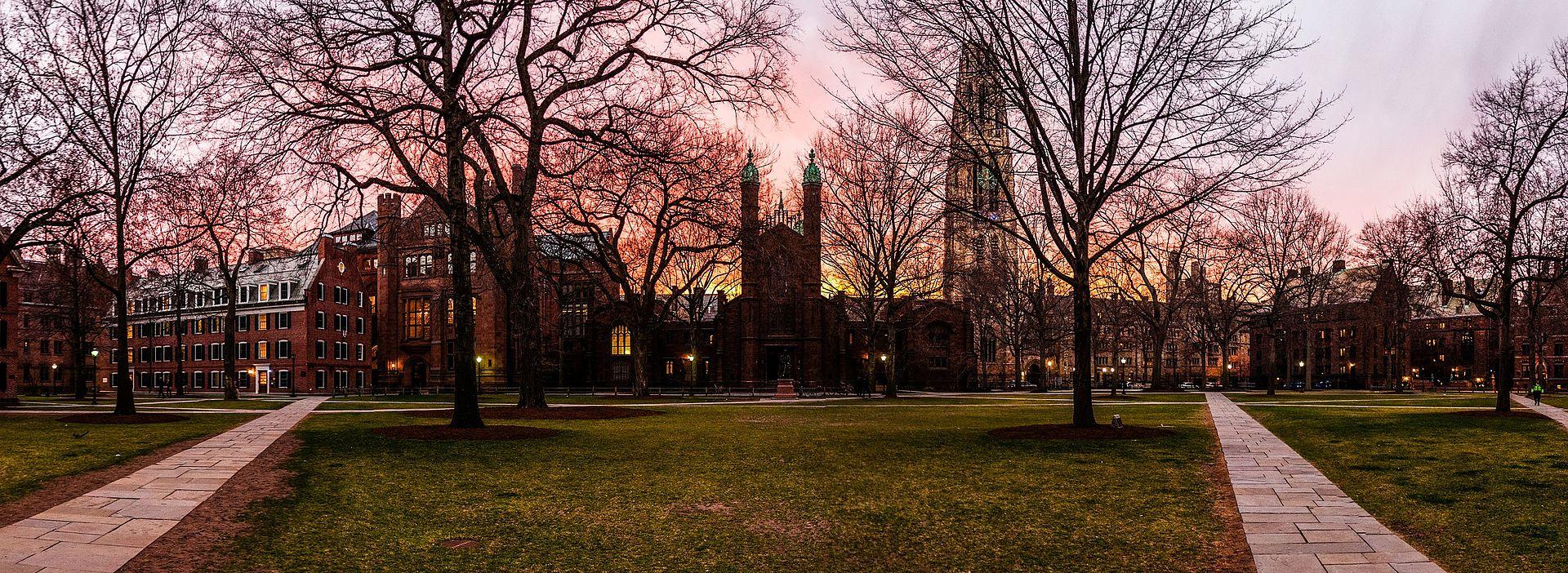
In today's world, professionals versed in art and design are in high demand, particularly those who can use their skills in both the fine arts and commercial worlds. Those looking to embark on a career in the arts have a huge range of options for their training and education. In this series, Art & Object delves into the top art schools and programs of the U.S. From public universities with state-of-the-art studios to solely arts-focused colleges with flourishing overseas programs, this list runs the gamut.
The top art programs of the Northeast, especially private and specialized schools, are some of the most expensive in America. Many of these institutions offer relatively traditional artistic training, teaching skills most suitable to an artist who will end up in galleries or auction houses. While these schools have faced difficulties over the last year or so, it seems that many used their resources to set up online exhibitions and to continue to offer career services without much, if any, delay.
Often located in or near centers of vibrant cultural and artistic life, these art schools offer invaluable exposure and enrichment opportunities to their students. Faculty members are often still actively working in the art scene and showing in prestigious galleries. And yet, despite this wealth of cultural exposure, the degree of diversity at these schools is not as high as one might expect when compared to other regions.
To determine its final rankings, Art & Object's editorial staff weighed the following factors: degree and curriculum variety, quality of school museums, school renown, tuition cost (undergraduate, graduate, etc. if applicable), employment rate, graduation rate, internship opportunities, student body diversity*, surrounding art scene, cultural opportunities, and student statements. While Art & Object has strived to craft a list in the most objective manner possible, we recognize that measures of "best" could include many other factors. With that said, here are the Art & Object selections of the best art schools in the Northeast.
You can find our rankings for the Southeast, Southwest, Midwest, and West here.
*Editor's Note: LGBTQIA+ individuals are not always accurately represented in gender data reported by institutions and organizations.
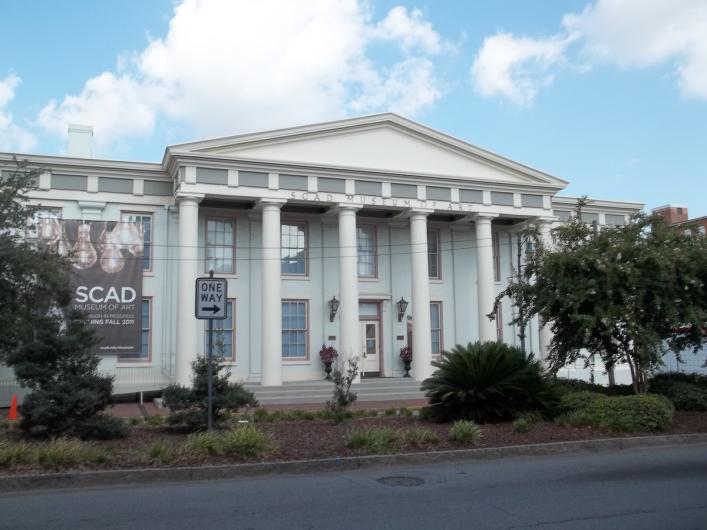
The Rhode Island School of Design (RISD) is located in Providence, RI. The school offers forty-four full-time Bachelor’s and Master’s degree programs including Jewelry and Metalsmithing, Interior Architecture, and Graphic Design. All first-years are required to take Experimental and Foundation Studies.
RISD—in partnership with Brown University—offers a Dual Degree program referred to as BRDD. Students in the BRDD program pursue a BFA with RISD and a Bachelor of Arts or Science with Brown.
Tuition, according to RISD, currently stands at $55,220. Relative to other schools listed, RISD is moderately priced. RISD also ranks moderately in terms of diversity. According to data from the 2019/2020 school year, the student population is 33 percent domestic students of color and 37 percent international students.
An important factor to consider alongside diversity is the school's decision to be and remain test-optional (i.e. SAT and ACT results are not required) for all applicants. Though many schools adopted this policy over the last year or so to accommodate for COVID restrictions, it has been RISD’s policy since 2019. This shows a unique dedication to and belief in students from a range of socioeconomic, educational, and neurodivergent backgrounds.
The RISD Museum—which houses around 100,000 works of art and boasts seven curatorial departments—is the only comprehensive art museum in southeastern New England. Providence, known to many as the state’s “Creative Capital,” is home to seven colleges and is conveniently located between buzzing metropoles and the more peacefully rural coastal and inland landscapes.
RISD prioritizes career readiness and hosts an annual Design and Fine Arts Portfolio Review which gives students the opportunity to make connections that may lead to internships or future jobs. Students also have access to RISD Portfolios, an online showcase of creative work. Notable alumni include Kara Walker and Shepard Fairey.
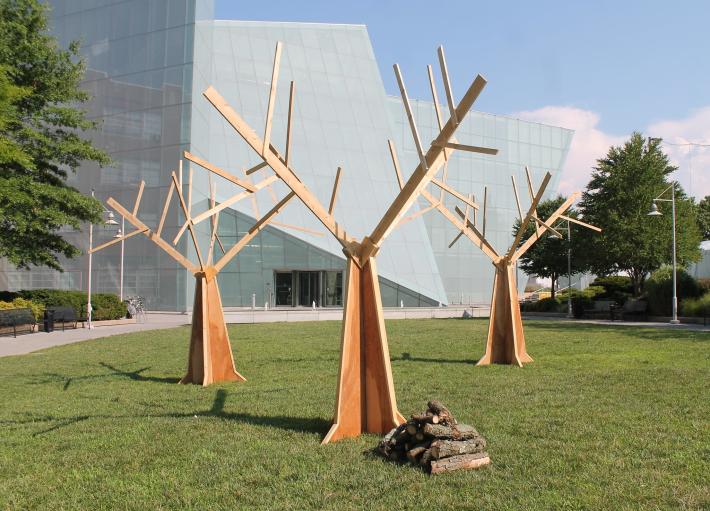
Baltimore's own Maryland Institute College of Art (MICA) is the oldest continuously degree-granting art and design college in the United States. At MICA, undergraduate students are required to take a core "First Year Experience" and then choose one of nineteen majors. They may also add a liberal arts minor—art history or humanistic studies—or a studio concentration to the mix. A range of graduate programs, that span five different categories, are also offered by the school. Students may pursue anything from a Master of Arts in Illustration to a Master of Business Administration in Design Leadership.
Tuition at MICA, according to the most recent data available, is about $50,160 for undergrads. This makes MICA the most affordable school on this year’s list of top Northeast schools. The school’s student body is comprised of 31 percent domestic students of color and 25 percent international students. These numbers are slightly low within the context of this list.
Students and Alumni have access to the MICAnetwork, an online tool that connects them to work and art opportunities via third parties.
MICA’s campus also hosts at least ten studios and maker spaces that are open to different sects of the student population. This includes the so-called Dolphin Shop, a space created to facilitate forward-thinking design and interdisciplinary practice. Located within the Dolphin Design Center—home of the established Architectural Design program in addition to the school’s new BFA programs in Game Design and Product Design—this particular shop and associated degrees are emblematic of the school’s broad dedication to innovation and multidisciplinarity within the art and design worlds.
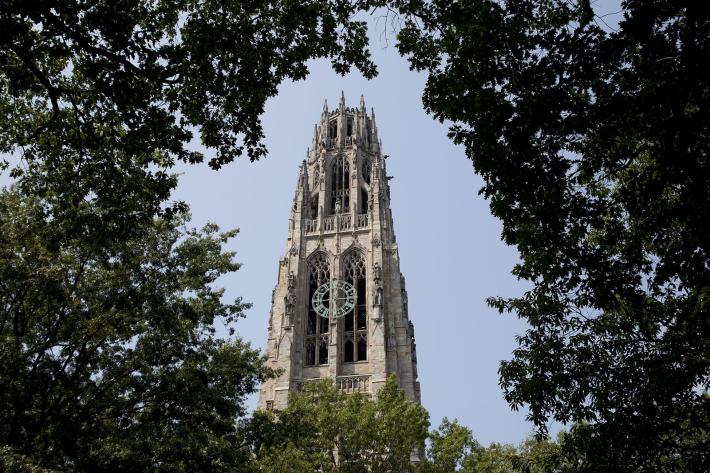
The Yale School of the Fine Arts is the oldest art school connected to a higher learning institution within the United States. As is typically the case for art schools that reside under the umbrella of such universities, students are encouraged to branch out and take advantage of the broad range of subjects and expertise surrounding them.
Yale’s MFA program is designed to change as the interests and needs of its students change so that it can, for example, help students explore and establish artistic practices that may not be offered within the program’s core curriculum. Students may pursue an MFA in Graphic Design, Painting and Printmaking, Photography, or Sculpture. Although Critical Practice and All-School/Interdisciplinary are not formal areas of study, both—according to Yale—are easy to seek out within the program and act as an idealistic framework of the school itself.
For undergraduates, Yale offers a single BA in Art with the requirement that majors choose a concentration in either Graphic Design, Painting/Printmaking, Photography, or Sculpture.
As of the 2020-2021 school year, tuition for undergraduates sits at $57,700 and for graduates it is $44,500, making Yale one of the more affordable schools listed here. The school’s acceptance rate dropped rather dramatically this past year from 7 to 4.62 percent.
The campus features several prestigious galleries and libraries including the Yale University Art Gallery, Yale Center for British Art, and the Beinecke Rare Book and Manuscript Library. The school also boasts a natural history museum. The Yale School of Art has produced many successful and even famous Alumni including Kehinde Wiley and Chuck Close.
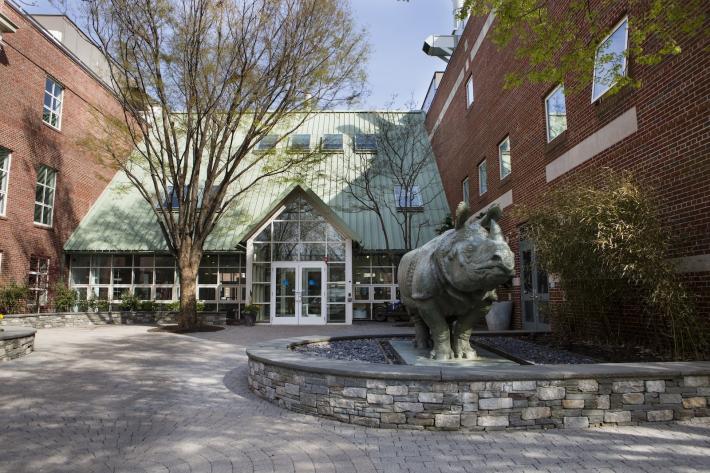
Tufts University’s School of the Museum of Fine Arts (SMFA) emphasizes the individual and provides abundant opportunities to customize one’s education. BFA students at SMFA do not declare focused majors. Rather, they work directly with advisors and staff to tailor their own personalized curriculum. Students also have access to courses and minors across the university and may even choose to pursue a Combined Degree, earning a BFA in Fine Arts and a BA or BS from the University’s School of Arts and Sciences.
In the words of former student Thom Solo, BFA, Class of 2012: “One of the many strengths of SMFA is the flexibility in the programs and agility of faculty to nurture and respond to students’ interests and the exploration of different media. Having a range of choices in the curriculum was great, but the school also allowed a sense of personal direction. Artists are the ultimate ‘self-starters’ and everything we do relies on this instinct, these skills. It’s been essential for me as I build my own company.”
Tufts reports that SMFA faculty are all working artists. According to university reports, its tuition is $61,646, making it one of the most expensive schools featured. That said, Tufts has also reported that it meets 100 percent of the demonstrated financial need for all students regardless of citizenship status. Tufts also ranks very well in terms of student body diversity. As of Fall 2020, the student body within SMFA was reportedly comprised of 36.4 percent students of color, 20.8% international, and 13.5 percent first-generation students.
SMFA’s campus is centrally located on Boston’s Huntington Avenue—or the Avenue of the Arts—alongside major collections at the Museum of Fine Arts and the Isabella Stewart Gardner Museum. The art school’s online presence and resources are also incredibly up-to-date. The website features a resource guide to exhibition opportunities available to students on campus, off-campus, and online.
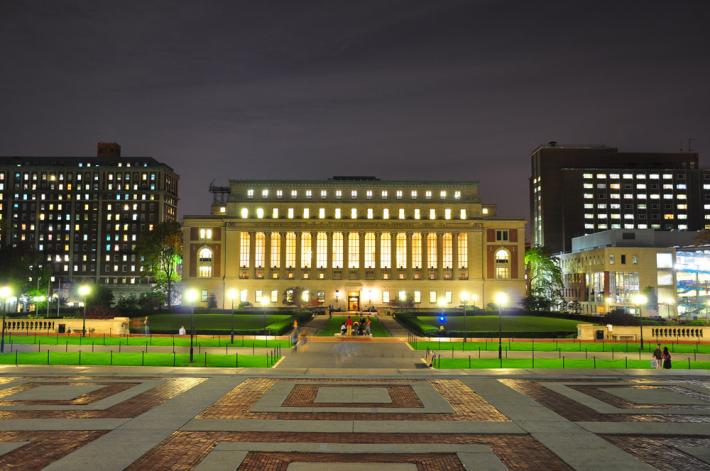
Columbia University’s graduate and undergraduate programs are structured to prioritize the development of a student’s vision over their development as, for example, a traditional painter. Although prospective MFA students are sorted into disciplines during the application process, they may work however they wish—free to explore new mediums and blend processes—once accepted.
The undergraduate Visual Arts major is similarly versatile. Concentrations are offered in Drawing, Painting, Sculpture, Photography, Printmaking, and Video but students may choose to focus on any combination of these disciplines.
The University also offers a unique Sound Art program, which former student Gerónimo M., MFA, Class of 2017, expands on: “Sound Arts has transformed the way I think and expanded and solidified my ideas at the same time... The faculty was a dream team. It's a great privilege to be part of the program and I learned so much from the students—the high quality of the students challenged me. It was a once in a lifetime chance to explore academia and practice, with the best tools possible.”
According to most recent data from Columbia, the graduate program consists of fifty-four students and twenty faculty—thirteen are full-time, seven adjunct. The University’s 2020-2021 undergraduate tuition is $60,514 and the graduate tuition is $65,116, making it one of the most expensive programs listed. The University’s graduate program is one of the most diverse listed, with a student body that is around 30 percent domestic students of color and around 40 percent international.
Located in the heart of New York City, cultural opportunities are abundant and the school’s Arts Initiative makes them accessible with a passport program that offers free admission to more than thirty museums. Additionally, Columbia’s own LeRoy Neiman Gallery and Wallach Art Gallery offer a wide array of opportunities to students. The Wallach is a premier visual arts space and works closely with the Department of Art History and Archaeology, School of the Arts, and the University libraries. The Neiman hosts exhibitions that showcase work from invited artists, faculty, and students.

The Rhode Island School of Design (RISD) is located in Providence, RI. The school offers forty-four full-time Bachelor’s and Master’s degree programs including Jewelry and Metalsmithing, Interior Architecture, and Graphic Design. All first-years are required to take Experimental and Foundation Studies.
RISD—in partnership with Brown University—offers a Dual Degree program referred to as BRDD. Students in the BRDD program pursue a BFA with RISD and a Bachelor of Arts or Science with Brown.
Tuition, according to RISD, currently stands at $55,220. Relative to other schools listed, RISD is moderately priced. RISD also ranks moderately in terms of diversity. According to data from the 2019/2020 school year, the student population is 33 percent domestic students of color and 37 percent international students.
An important factor to consider alongside diversity is the school's decision to be and remain test-optional (i.e. SAT and ACT results are not required) for all applicants. Though many schools adopted this policy over the last year or so to accommodate for COVID restrictions, it has been RISD’s policy since 2019. This shows a unique dedication to and belief in students from a range of socioeconomic, educational, and neurodivergent backgrounds.
The RISD Museum—which houses around 100,000 works of art and boasts seven curatorial departments—is the only comprehensive art museum in southeastern New England. Providence, known to many as the state’s “Creative Capital,” is home to seven colleges and is conveniently located between buzzing metropoles and the more peacefully rural coastal and inland landscapes.
RISD prioritizes career readiness and hosts an annual Design and Fine Arts Portfolio Review which gives students the opportunity to make connections that may lead to internships or future jobs. Students also have access to RISD Portfolios, an online showcase of creative work. Notable alumni include Kara Walker and Shepard Fairey.

Baltimore's own Maryland Institute College of Art (MICA) is the oldest continuously degree-granting art and design college in the United States. At MICA, undergraduate students are required to take a core "First Year Experience" and then choose one of nineteen majors. They may also add a liberal arts minor—art history or humanistic studies—or a studio concentration to the mix. A range of graduate programs, that span five different categories, are also offered by the school. Students may pursue anything from a Master of Arts in Illustration to a Master of Business Administration in Design Leadership.
Tuition at MICA, according to the most recent data available, is about $50,160 for undergrads. This makes MICA the most affordable school on this year’s list of top Northeast schools. The school’s student body is comprised of 31 percent domestic students of color and 25 percent international students. These numbers are slightly low within the context of this list.
Students and Alumni have access to the MICAnetwork, an online tool that connects them to work and art opportunities via third parties.
MICA’s campus also hosts at least ten studios and maker spaces that are open to different sects of the student population. This includes the so-called Dolphin Shop, a space created to facilitate forward-thinking design and interdisciplinary practice. Located within the Dolphin Design Center—home of the established Architectural Design program in addition to the school’s new BFA programs in Game Design and Product Design—this particular shop and associated degrees are emblematic of the school’s broad dedication to innovation and multidisciplinarity within the art and design worlds.























